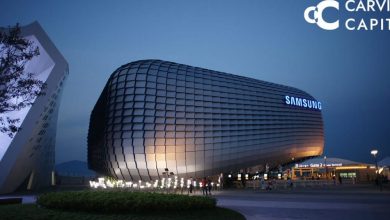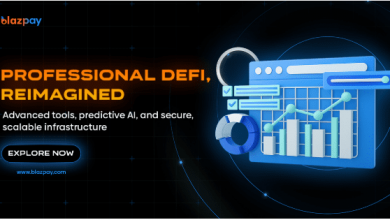Behind the Feed: Inside AI's Economic Engine

When TikTok exploded in popularity in 2016, few expected it would eclipse Google as the most visited website in the world just five years later. Today, its cultural reach is obvious. But the app’s deeper legacy might just be in how its “For You” feed redefined algorithmic engagement. Its uncanny ability to keep users scrolling was something all companies were eager to see replicated in their own platforms.
Today, that same logic powers nearly every major consumer experience online. Whether you’re clicking related videos on YouTube, browsing your Facebook feed, or shopping on Amazon, you’re engaging with systems built to predict what you’ll want next, perhaps before you even know to ask. For Big Tech’s biggest platforms, the algorithm has become both the experience and the product.
Few engineers understand this better than Yang Yang. A leading machine learning expert and IEEE Senior Member, Yang has spent more than a decade building the infrastructure behind some of the world’s most influential platforms. He was part of the first wave of engineers exploring high-throughput machine learning, and his pioneering research on deep learning systems and their scalability laid the foundation for how the industry thinks about large neural models today.
“These algorithms are the economic engine behind most major consumer platforms,” Yang says. And he’s not exaggerating. When a modest gain in personalization accuracy might cut customer acquisition costs by half or yield a 15% revenue lift, platforms live and die by their ability to serve the right content to the right person at the right time. It’s no coincidence that companies known for AI-driven recommendations have shaped the commercial logic of the internet itself.
The First Commercial AI
Long before ChatGPT and generative tools captured the public imagination, companies like Google, Amazon, Meta, and Netflix were investing heavily in predictive algorithms. Recommender systems were among the first commercially viable applications of machine learning, and as early as 2018, YouTube’s recommendation engine was already responsible for 70% of the platform’s watch time.
Early systems relied on basic heuristics; simple rules and guesswork were the basis for recommendations like “users who liked this also liked that.” But as platforms began accumulating behavioral datasets, it became clear that more flexible and expressive models were needed. Deep learning architectures became the standard, and they allowed platforms to process billions of user signals to infer latent intent and model long-term interest.
Yang was among the engineers designing and studying these architectures when few outside the field appreciated their importance. His research into scalable neural architectures helped advance recommendation engine development at a time when hardware constraints posed real limitations.
“You can’t decouple product performance from model performance anymore,” he says. “Relevance affects your retention, your conversions. It likely drives your monetization. Having a reliable deep learning and recommendation engine is central to many of these business models.
Today, recommender systems represent one of the most mature and economically consequential applications of AI. The U.S. alone accounts for nearly a third of the global recommendation engine market, driving a multi-billion dollar segment of the tech industry and delivering billions of predictions each day.
Engineering for Internet Scale
But delivering those results is another thing entirely, and represents one of the most complex engineering challenges in tech. Every feed refresh involves multiple stages: retrieving potential candidates, ranking them by predicted relevance, filtering for freshness or safety or policy, and finally, delivering the result—all before the user gets impatient and scrolls past.
The retrieval phase is especially complicated. Traditional keyword-based search is too shallow and literal to capture user intent, so platforms have moved toward neural retrieval models. These map both users and content into high-dimensional embedding spaces, allowing for richer, more nuanced matching based on patterns in behavior and inferred interests, even when there are no obvious keywords in common. A user lingers on a video about induction stoves and, without ever typing anything into a search bar, is offered a cooking tutorial.
But this added sophistication comes at a cost. Neural retrieval is resource-intensive, and running them fast enough to power real-time discovery is no small feat. “Companies can’t just scale up the model,” Yang explains. He emphasizes that performance engineering has become a discipline of its own, involving everything from memory optimization to hardware acceleration.
Yang explains that it’s necessary to co-design algorithms and infrastructure hardware in tandem, a prerequisite when a good experience is measured in milliseconds, and billions of inferences need to be performed for a global user base. He likens it to designing a just-in-time supply chain, where a performance bottleneck can have cascading effects on the entire platform.
Evolving Business Logic
To users, recommendation engines feel like a feature. To companies, they’re something closer to a growth strategy.
Better predictions mean more engagement. More engagement means more ads viewed, more products purchased, more data fed back into the system. And those feedback loops compound as the ecosystem scales, making them powerful levers for businesses. “The better your system understands intent, the more valuable your platform becomes,” Yang explains. That’s why, he says, nearly every major consumer platform has invested in building dedicated teams around these systems.
And the systems are still evolving. As compute becomes cheaper and models more expressive, platforms are beginning to rearchitect around agentic and anticipatory behaviors. In place of clicks or views, these agents are expected to learn continuously, incorporating user feedback and cross-referencing multimodal signals in concert. Big Tech is hoping to blur the boundaries between search, discovery, commerce, and personalization.
To some, that might sound futuristic. For Yang, it’s simply the logical outcome of a decade of iteration. “These systems are the result of thousands of deliberate engineering decisions, about architecture, latency, safety, scalability,” he says. “Most people never see that work. But more are beginning to realize just how much of the internet depends on getting those decisions right.“





